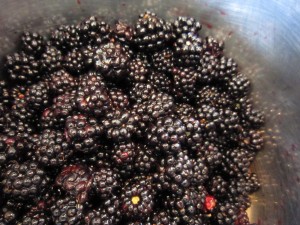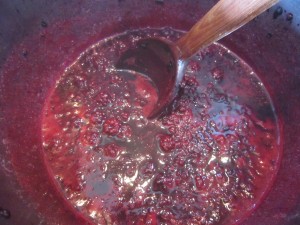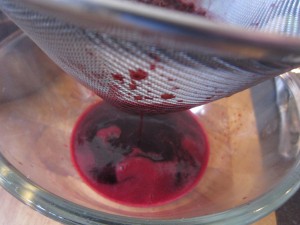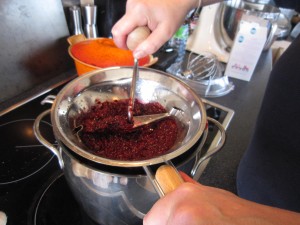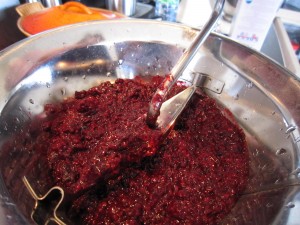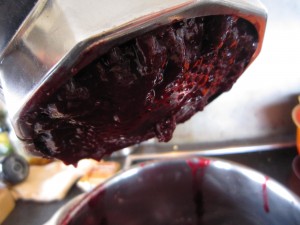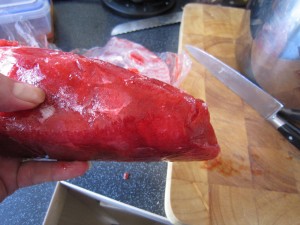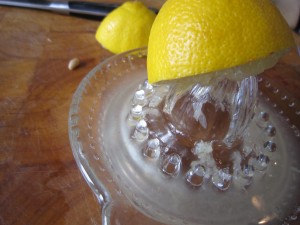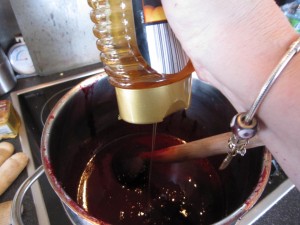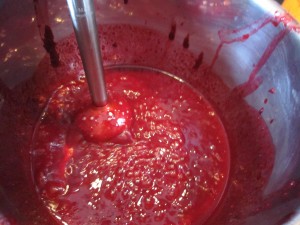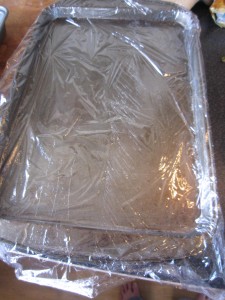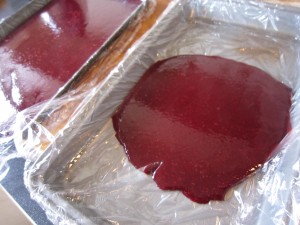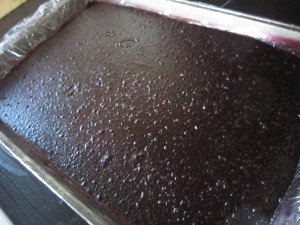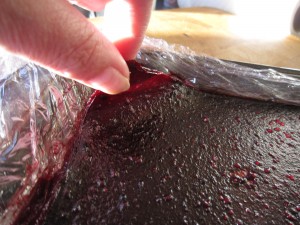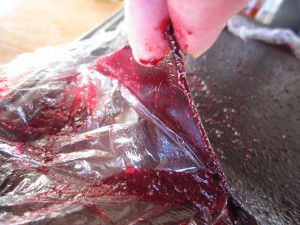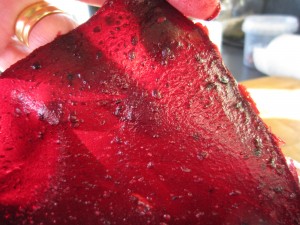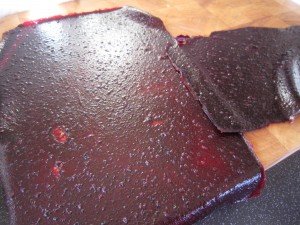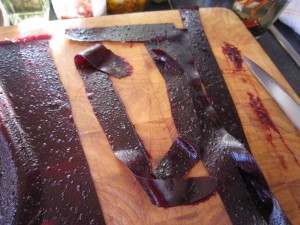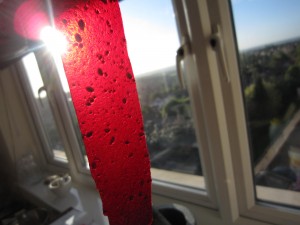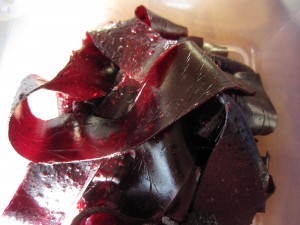So, we returned from our foraging expedition with two bags of berries. There were still huge amounts left on the bushes but we had to stop. I needed to see if the fruit leather experiment would work, or, at least, work for me. If it does then I am going back to get more.
Once back in the kitchen I picked through the berries and removed any leaves and stray bits that had fallen into our bags and put them straight into a large, heavy bottomed pan on a gentle heat to start cooking down.
The theory behind making fruit leather is that you have to cook the fruit and puree it, adding just honey or sugar to sweeten it (if necessary) and lemon juice. What you end up with is the very essence of the fruit so it is important to keep everything simple. There’s no need to add too much sugar…I suppose, though, it is a matter of taste. Berries, especially wild berries, can be very sharp and do need something to sweeten them. Just don’t go masking the fruit with an overload of sugar.
A sprinkling of sugar helps the berries start to cook down – there’s no need to add water as the juices soon come out. Just look at that glorious colour!
Once the fruit was cooked, I strained the fruit pulp to get the majority of the juice out
There was still a lot of juice in the pulp so I got my mouli food mill out and started milling the pulp. This will keep the seeds out and push through the pulp. Wild berries are very seedy so you must try and get the majority of them out. If you haven’t got a food mill then try pushing the pulp through a sieve.
You can see how many seeds there are as the pulp gets pushed through
And underneath the mill you can see the pure fruit pulp being squeezed out
Last year we had gone to a Pick Your Own Fruit farm and came home with punnets of strawberries. I had cooked some of them down and frozen, in bags, those we didn’t eat. This was an ideal time to use up the last of the bags of strawberries and add some extra fruit to our fruit leather. There would be seeds from the strawberries, I know, but at least I had removed the majority of the blackberry seeds.
I added the juice of a lemon
And some honey to taste
And pureed it all to a lovely smooth mix before letting it simmer, bubbling gently for 5 minutes.
I lined a couple of baking trays with clingfilm
And poured in a thin layer of the fruit puree. It spreads out over the cling film. You don’t need a really thick layer – maybe 3mm or thereabouts? Put in a bit at a time and tip the tin back and forth to get an even layer.
My great plan to free up freezer space by making preserved fruit that didn’t need freezing wasn’t quite working out because I had puree left over. Into pots it went and into the freezer. Some was poured over yoghurt that evening to have a a dessert after supper.
And then this is when I started to wonder how I was going to do the next bit….
Everything I had read suggested that the trays were then put into the oven on 50 degrees c (120 degrees F) and left for 6 hours. And yes, it was OK to use clingfilm and put it in the oven. That temperature is so low it won’t melt the clingfilm. What you are really doing, of course, is just drying it out, rather than cooking it. When this is manufactured on a large scale, dehydrators are used but an oven on the lowest temperature possible for a long time does the job just as well.
Thing is, it was 9pm and I was tired… did I start it off now and then set my alarm for 3am? Or did I try and stay awake till midnight and then turn the oven off when I got up for work? What would happen if I left it in for longer?
I decided, in the end, to start it off before I went to bed and get up at three…. but then, of course, I ended up waking up every hour or so and going to check. I thought I might as well so at least we would all have some kind of idea about cooking it.
For the first few hours it was definitely liquid and I thought I must have gone wrong somewhere but eventually

as the sun came up, it became thicker and sticky… and at last it looked set.
It was darker and when I touched it it felt tacky but not sticky
I could peel it away from the cling film! It had worked!
Maybe it could have stayed in a bit longer as there was some puree still liquid underneath…
But really? I think it worked! It pulled up as a sheet just as I’d read it would do
I had two sheets of fruit leather
It was easy to cut into strips
And held up to the light it was the most beautiful colour
All I had to do now was put the strips into an airtight box and we had our supplies of fruit leather.
The big question, of course, is was it worth it?
Was it worth diving through the bushes, getting scratched and prickled to collect the fruit? Was it worth the constant getting up to check the progress of the leather? Would I do it again?
Yes, yes and yes.
I know that next time I will be more relaxed about the timing – 50 degrees C is so low that leaving it in there for longer won’t harm it and next time when there’s puree left over I will simply make another tray of it.
The taste was fantastic – it really was the fruitiest fruity taste I’d ever had. The texture was smooth and chewy, but not horribly so… it soon dissolves. We have eaten it as a sweet treat and also cut it into slices and stirred it through yoghurt.
Guess what? We’re going out blackberrying again.
